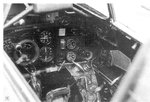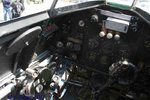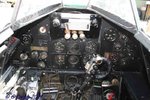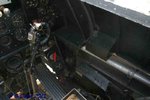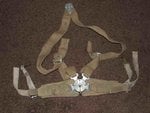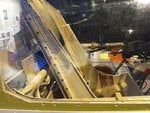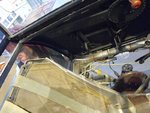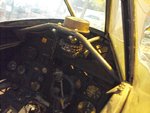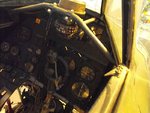Totalize
Tech Sergeant
Here is my new project. I will be doing the Hasegawa 1/48 Scale Hawker Typhoon IB Bubble Top. After researching various Typhoon's I have decided to do one from 439 Squadron Royal Canadian Air Force piloted by Flying Officer Hugh Fraser.
First some background information:
Hugh Fraser's Typhoon carried the markings of 5V-X and serial number RB281. This aircraft was delivered to 439 Squadron on 28th December, 1944 and was a late production Typhoon. Because of this fact It most likely had the larger tempest tailplanes and 4 blade propeller. Among the first action to be seen by this aircraft was on 1 January 1945 when Hugh Fraser engaged a large number of FW190's destroying two of them in the process during a low level dogfight. on 14 February 1945 Hugh Fraser, flying 5V-X along with F/L Lyell Shaver engaged two ME262's from 5./kG 51 flying below them at roughly 3000 feet. They dove to engage the Luftwaffe aircraft, Shaver hit one which blew up while Fraser poured 20 mm rounds into the other ME262 which started belching smoke and tumbled down through the clouds. Both pilots from KG51 FW Werner Witzmann and Lt Hans-George Richter were killed, falling about 20 miles north of Coesfeld, Germany. On 2 March, 1945 while returning from a mission 5V-X RB281 suffered an engine failure and crash landed near Eindhoven. Fraser survived as did the aircraft which was repaired but eventually written off just after the war.
Here's a shot of Fraser in Nicky with some additional details about his kills.
Note the one German Kill marking in white versus the other two. This perhaps denotes
that he was awarded a probable kill for the ME262 at the time this picture was taken instead of
a confirmed kill.

For this build I have added the following upgrades to bring the Hasegawa kit up to the standards of a late Typhoon.
Ultracast Tempest tailplanes
Ultracast Typhoon exhasuts
Ultracast 4 blade propeller. The kit comes with a 3 bladed prop.
Airies Typhoon bubble top cockpit for Hasegawa kit.
Barracuda cast Typhoon main wheels and anti flutter tail wheel
Eduard Canopy mask set
Aeromaster decals Storms in the sky Part II with decals for Nicky
Bombs set with pylons graciously donated by Terry AKA Airframes. The Hasegawa kit does not provide a set of bombs.

First some background information:
Hugh Fraser's Typhoon carried the markings of 5V-X and serial number RB281. This aircraft was delivered to 439 Squadron on 28th December, 1944 and was a late production Typhoon. Because of this fact It most likely had the larger tempest tailplanes and 4 blade propeller. Among the first action to be seen by this aircraft was on 1 January 1945 when Hugh Fraser engaged a large number of FW190's destroying two of them in the process during a low level dogfight. on 14 February 1945 Hugh Fraser, flying 5V-X along with F/L Lyell Shaver engaged two ME262's from 5./kG 51 flying below them at roughly 3000 feet. They dove to engage the Luftwaffe aircraft, Shaver hit one which blew up while Fraser poured 20 mm rounds into the other ME262 which started belching smoke and tumbled down through the clouds. Both pilots from KG51 FW Werner Witzmann and Lt Hans-George Richter were killed, falling about 20 miles north of Coesfeld, Germany. On 2 March, 1945 while returning from a mission 5V-X RB281 suffered an engine failure and crash landed near Eindhoven. Fraser survived as did the aircraft which was repaired but eventually written off just after the war.
Here's a shot of Fraser in Nicky with some additional details about his kills.
Note the one German Kill marking in white versus the other two. This perhaps denotes
that he was awarded a probable kill for the ME262 at the time this picture was taken instead of
a confirmed kill.
For this build I have added the following upgrades to bring the Hasegawa kit up to the standards of a late Typhoon.
Ultracast Tempest tailplanes
Ultracast Typhoon exhasuts
Ultracast 4 blade propeller. The kit comes with a 3 bladed prop.
Airies Typhoon bubble top cockpit for Hasegawa kit.
Barracuda cast Typhoon main wheels and anti flutter tail wheel
Eduard Canopy mask set
Aeromaster decals Storms in the sky Part II with decals for Nicky
Bombs set with pylons graciously donated by Terry AKA Airframes. The Hasegawa kit does not provide a set of bombs.
Last edited:

